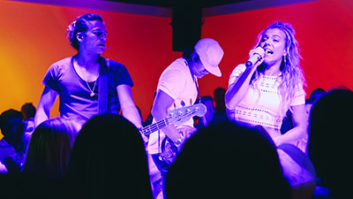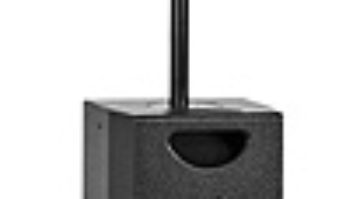
With nearly 500 country music artists drawing an average daily footprint of 87,680 fans from all 50 states and 20 foreign countries, the Country Music Association’s annual CMA Music Festival set another all-time attendance record this year. Originally known as Fan Fair, today’s CMA Music Festival started in 1972 as a meet-and-greet event. That tradition continues inside the Music City Center, where Fan Fair X hosts autograph booths and three small performance stages.
Every night, the big stars shine at downtown’s L.P. Field (now renamed Nissan Stadium, home of the NFL Tennessee Titans), where a slate of several headlining artists take the stage. During daylight hours, free music abounds, on public stages that spread out from the grassy shore of the Cumberland River through downtown Nashville’s parks, plazas, and streets.
The Nashville office of Sound Image is one of the primary audio suppliers for the festival, working the nightly headlining concerts, plus the Belk Park and the Plaza Stages, two of the free music venues. “There is so much going on during Fan Fair week, we have gear all over town,” said Andrew Dowling of Sound Image, who managed the Belk Park Stage. “It’s a big showcase for these artists, so we try to provide the best service possible. Fortunately, every piece of gear at Sound Image is tour grade and all our people are pros.”
The Belk Park Stage, which focused on up- and-coming artists in a relaxed setting, is a prime example. After a successful tour with Vince Gill, Sound Image selected a compact PA system based on VUE Audiotechnik loudspeakers. Both the FOH and monitor consoles were Avid Profiles, augmented by Dolby Lake processing.
On the backline, the microphone complement was primarily Shure-based, with UHF-R wireless systems augmenting the standard hardwired mics. Performers opting for floor wedges used Sound Image’s PD15 monitors, plus an L-Acoustics dV-Sub for the drummer, all powered by Crown I-Tech HD12000 amplifiers. For in-ears, a rack of Shure PSM 1000 in-ear systems was available.
The VUE line array system consisted of twin hangs of eight al-8 loudspeakers. Directly below them was a ground stack of four additional al-8 boxes atop a pair a al-8SB flyable subs. Just outside that, six patent-pending VUE hs-28 ACM self- powered subwoofers were deployed, three per side. For front fill, three more al-8 boxes were employed. The entire system was powered and controlled by the VUE V6 and V4 Systems Engines.
“The original plan was for a 12-box line array of the al-8,” noted Dowling. “But when we arrived on site, the staging provided would only support 1,000-pounds instead of the 2,000-pound load limit we anticipated.”
Using a Metric Halo ULN-8 with Spectrafoo analysis software and DPA 4007 mic, Dowling created a new layout for the system. “We treated each side of the PA as having three elements,” he recounts. “The main line array handled the highs, which was then aligned with the ground stack of four more al-8s with two al-8 subs and took us down to about 55 Hz. The final element was the VUE hs-28 subwoofers, which are dual 18-inch boxes that easily filled out the bottom with plenty of horsepower.”
To help navigate the strict 15-minute set change timing without a second console, Sound Image supplied a pair of VUE i-8a nearfield speakers at front of house. Using a MixSwitch by APB- DynaSonics to turn off the console-to-PA while preserving talkback and video feeds, the engineer could dial in a good mix in time for the first song.
“The CMA Music Festival is incredibly important to the artists, especially the up-and- coming acts,” said Andrew Dowling. “The sets are only 25 minutes, so we do everything we can to make sure they sound great. The VUE speakers were a big part of that in Belk Park, and we also used them for a special event outside the Grand Ole Opry. They sounded great all week, and handled all the rain and heat of a Nashville summer without a problem.”





